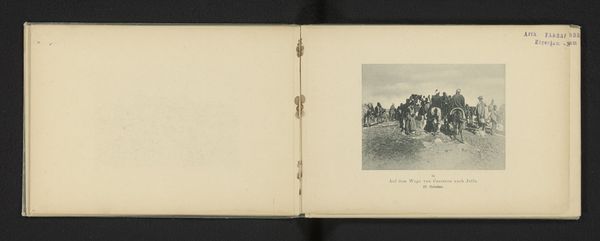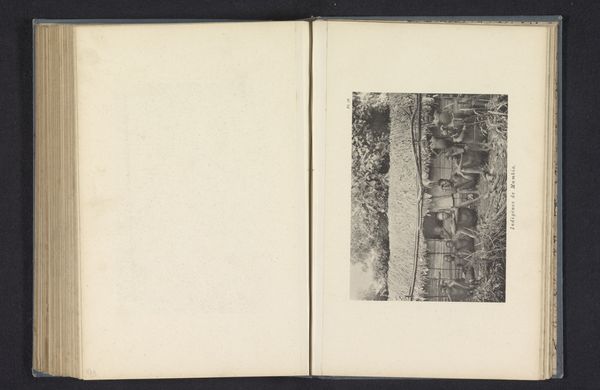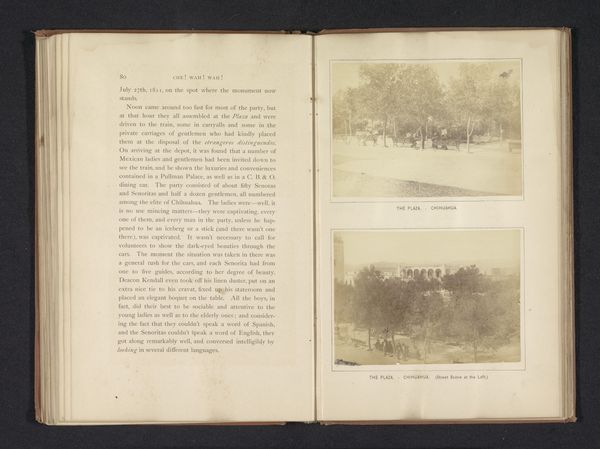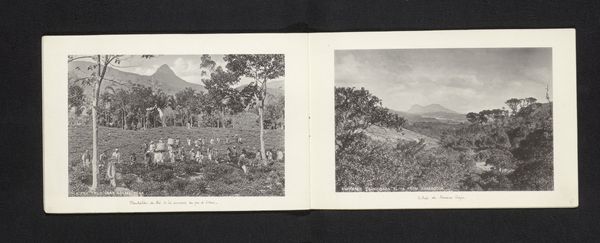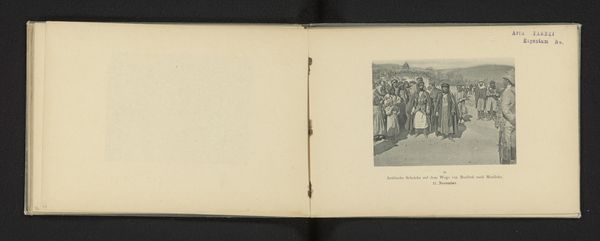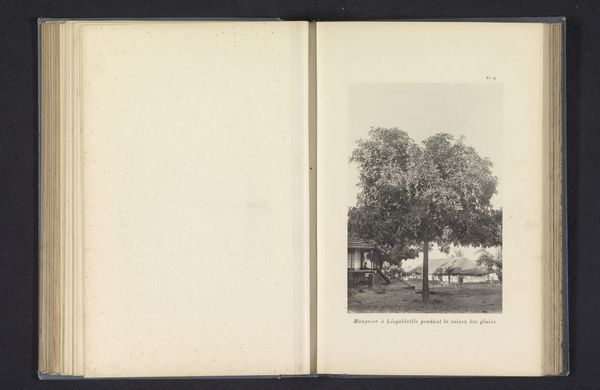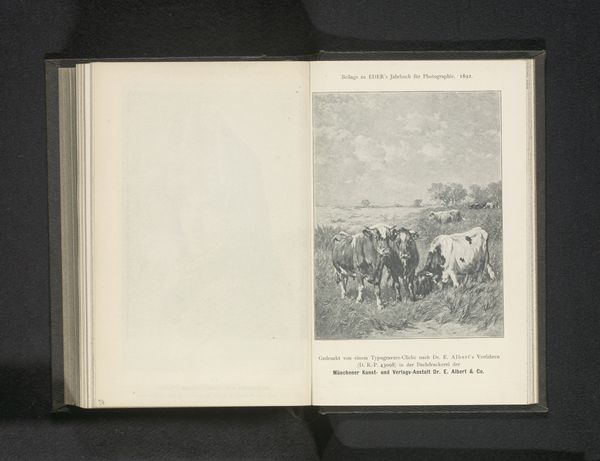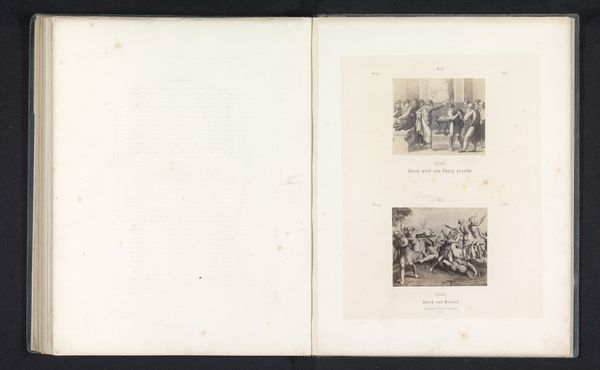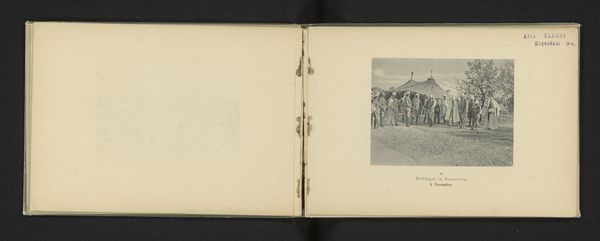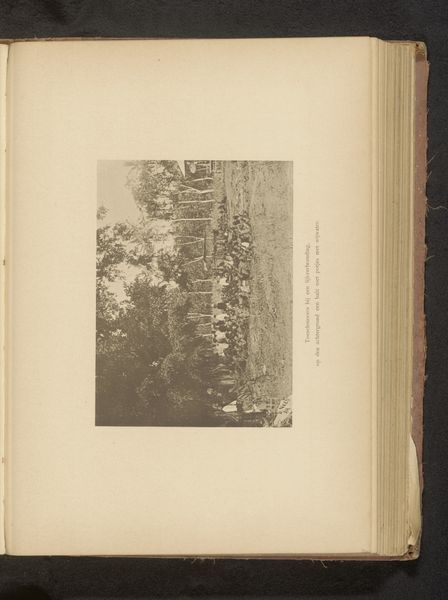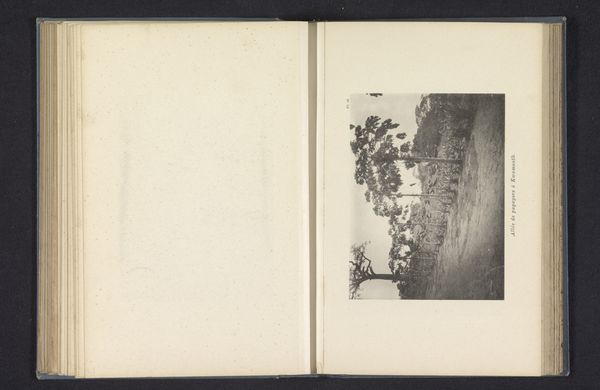
photography, albumen-print
#
african-art
#
landscape
#
photography
#
albumen-print
Dimensions: height 161 mm, width 110 mm
Copyright: Rijks Museum: Open Domain
Curator: So, we’re looking at "Inwoners van Irebu op de oever van de Congo," a photograph taken by Franz Thonner in 1896. It's an albumen print, presented within a bound album. Editor: The image shows a gathering of people near the water, almost swallowed by dense vegetation. It feels like a document, capturing a moment in time, yet something about its stillness unsettles me. What do you see in it? Curator: As a materialist, my gaze drifts towards the production of this image, especially in that period. We’re not simply viewing a landscape but engaging with the mechanics behind its capture. How was this print made? Who had access to such materials, and whose image was being consumed? Editor: That makes me think about how the albumen print process, with its reliance on egg whites, connected the photographic practice directly to agricultural resources and even colonial economies. Was this an expensive process for Thonner? Curator: Precisely. The materiality signifies wealth and access. But consider also the landscape. How did Thonner or his patrons see and frame the land and its inhabitants? What roles do the figures play within this manufactured scene, positioned neatly among tropical foliage, suggesting "untouched" exoticism? Editor: So, we’re examining not only the visual narrative but also the political and economic underpinnings that made the photograph possible and determined its content. Curator: Yes, it prompts us to think critically about the social context embedded in the photograph. For example, what kind of labor went into not only creating but distributing and exhibiting it, reaching different audiences, each processing it through its unique lens? Editor: I never thought of a photograph as an object so deeply tied to these socioeconomic systems, more as a window into reality. Curator: And that, in itself, reveals an ingrained understanding that often needs to be challenged! Examining the materials transforms this photograph from a snapshot into an artifact of colonial production.
Comments
No comments
Be the first to comment and join the conversation on the ultimate creative platform.
